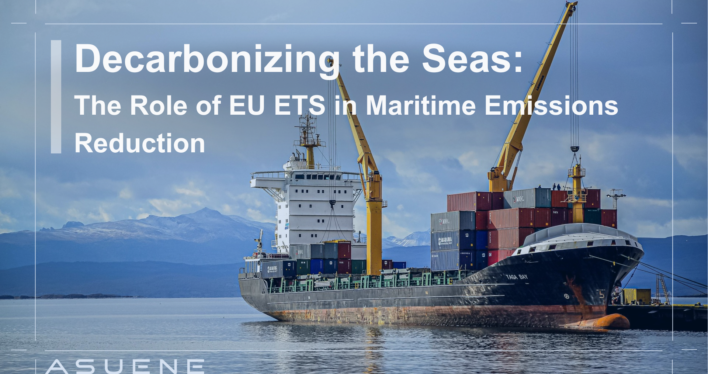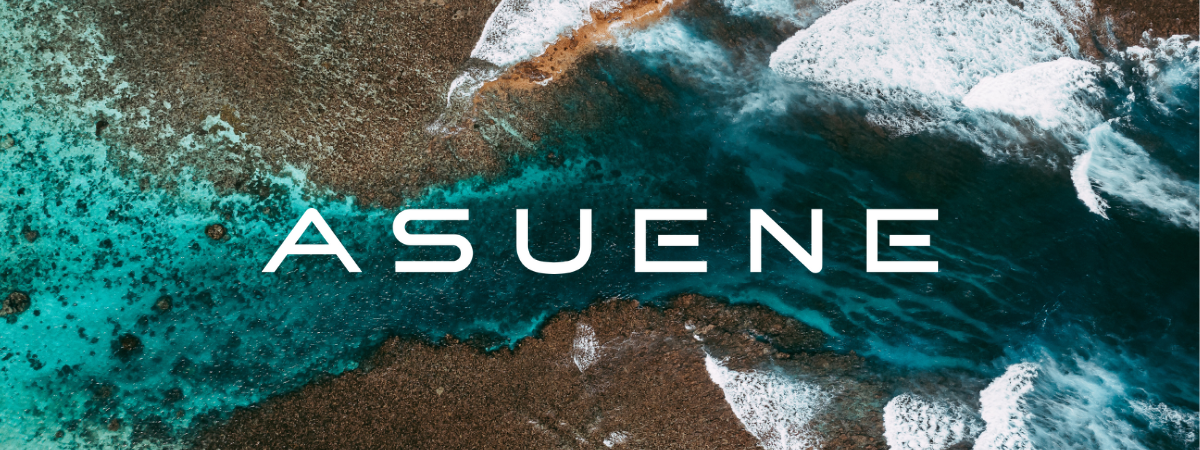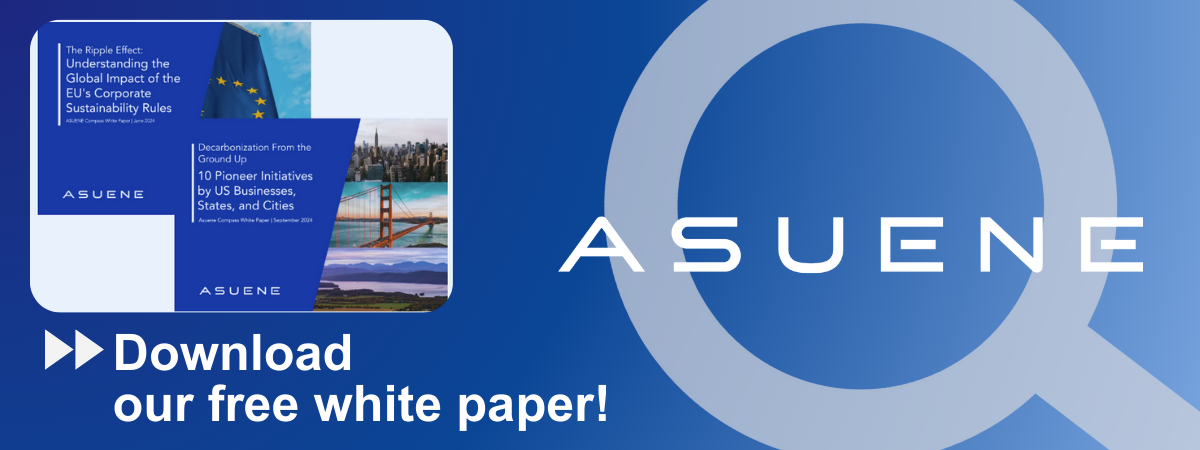- Article Summary
-
Overview
Maritime shipping, accounting for nearly 3% of global greenhouse gas (GHG) emissions, is essential to international trade, moving over 80% of global goods by volume. Yet until recently, it largely escaped stringent climate regulation. The European Union changed that paradigm by integrating maritime shipping into the EU Emissions Trading System (EU ETS) in January 2024. Ships exceeding 5,000 gross tonnage and calling at EU/EEA ports are now obligated to surrender allowances for their carbon dioxide emissions: 100% for intra-EU voyages and 50% for voyages to or from non-EU destinations.
This regulation signals a turning point for global maritime transport. It presents operational and financial challenges but also opens pathways for decarbonization through innovation and policy coordination. U.S.-based companies and international shippers with EU exposure must now recalibrate operations to remain competitive in this carbon-conscious landscape.
Economic Impact and Compliance Mechanisms
The EU ETS imposes a phased compliance schedule:
- 2025: 40% of 2024 emissions covered
- 2026: 70% of 2025 emissions
- 2027 onward: 100% emissions coverage
The deadline for surrendering 2024 allowances is September 30, 2025. As of early 2025, the price of EU Allowances (EUAs) averaged around €76.35 per ton of CO₂, with volatility expected due to geopolitical and energy market dynamics. Auction revenues from the ETS in 2024 reached €183.6 billion, much of it directed toward climate innovation.
Compliance mechanisms are reinforced through the EU’s MRV (Monitoring, Reporting, and Verification) system, active since 2018. The system mandates standardized emissions reporting, ensuring transparency and regulatory oversight. Compared to rigid command-and-control schemes, market-based mechanisms like the ETS are cost-efficient and promote technological innovation.
Concerns about carbon leakage, such as rerouting to non-EU ports to avoid costs, have not materialized significantly. The European Commission’s 2025 review found minimal evidence of systemic avoidance, though monitoring continues.
| Voyage Type | ETS Coverage (2024) | ETS Coverage (2025) | ETS Coverage (2026 onward) | Description |
|---|---|---|---|---|
| Intra-EU voyage (both ports in EU/EEA) | 40% | 70% | 100% | Full emissions from voyage must be reported and covered |
| Outbound (EU port to non-EU port) | 20% (50% of voyage @40%) | 35% (50% of voyage @70%) | 50% | Half of total voyage emissions are included |
| Inbound (non-EU port to EU port) | 20% (50% of voyage @40%) | 35% (50% of voyage @70%) | 50% | Same as above; reflects split emissions accountability |
| Emissions at berth in EU port | 40% | 70% | 100% | Emissions during port operations fully included |
Operational Strategies for Emissions Reduction
Shipping companies are employing a variety of strategies to reduce their emissions and comply with the new EU ETS requirements. Many are retrofitting their vessels with technologies that improve fuel efficiency, such as hull coatings, redesigned bulbous bows, and waste-heat recovery systems. These enhancements can yield fuel savings of up to 14%. Some operators are revisiting wind-assisted propulsion technologies, like Flettner rotors, which are experiencing a resurgence due to their measurable emissions benefits.
Fuel switching is another prominent strategy. Alternatives to traditional marine fuels—such as LNG, biofuels, e-methanol, green ammonia, and hydrogen—are becoming more common. However, these alternatives come at a higher cost. In 2025, for example, biofuel blends in Rotterdam cost approximately €686 per ton compared to €505 per ton for very low sulfur fuel oil (VLSFO). Nonetheless, regulations like FuelEU Maritime are setting aggressive targets, requiring a 2% reduction in GHG intensity by 2025 and scaling up to 80% by 2050.
Operational changes also play a role. Companies are adopting slow steaming techniques, optimizing voyage planning through AI-based tools, and using predictive maintenance systems to minimize fuel use and downtime. These operational adjustments, while less capital-intensive than retrofitting or fuel changes, offer immediate emissions reductions and financial savings.
To manage financial exposure to fluctuating carbon prices, shipping firms are exploring financial instruments like carbon insurance and emissions futures contracts. These tools can help stabilize budgeting and reduce compliance risk.
Innovation & Technology Adoption
Technological innovation is central to maritime decarbonization. Notable examples include Cargill’s deployment of WindWings, large rigid sails that have achieved daily CO₂ emissions reductions of around 14% on retrofitted bulk carriers. Globally, over 8,500 vessels—representing about a third of the global fleet tonnage—have been equipped with energy-saving devices.
Digitalization is another transformative trend. AI-powered fleet management systems now provide real-time fuel analytics, weather-based voyage optimization, and predictive maintenance capabilities. These tools not only improve operational efficiency but also help shipping firms meet increasingly stringent EU digital compliance standards.
Engine and fuel innovations are advancing rapidly. Marine engines capable of running on ammonia and hydrogen are currently in development, with several expected to launch between 2025 and 2030. These developments are supported by the EU Innovation Fund and equivalent U.S.-based R&D programs, reflecting a global commitment to sustainable maritime technology.
However, the growth of clean technologies must be matched by adequate infrastructure. The availability of alternative fuels remains uneven, though significant progress is being made. By 2025, over 120 European ports are expected to offer bunkering facilities for bio-LNG and other sustainable fuels.

Policy Synergies, Global Cooperation & Future Outlook
The EU is not acting in isolation. Upcoming reforms under ETS Phase 5, scheduled for implementation in 2026, will introduce tighter emissions caps and increase the share of allowances subject to auctioning. These changes aim to enhance the system’s environmental integrity while maintaining economic competitiveness. The FuelEU Maritime regulation and the Carbon Border Adjustment Mechanism (CBAM) further align with these efforts, creating a cohesive policy framework across sectors.
Internationally, the International Maritime Organization (IMO) is stepping up its climate ambition. Starting in 2028, the IMO’s Net-Zero Framework will introduce a global carbon levy projected to be around $100 per ton of CO₂. While the EU ETS currently covers emissions from voyages involving EU ports, these global measures will help close existing regulatory gaps. The EU is also exploring the development of complementary carbon credit systems to more fairly account for emissions on international routes.
Transatlantic cooperation is gaining momentum. U.S. legislators are actively considering emissions-based charges and ETS-like mechanisms for major ports. Joint initiatives between the EU and the U.S. are emerging in areas such as alternative fuel standardization, emissions data harmonization, and port infrastructure development.
These regulatory and technological shifts are already influencing trade logistics. Freight rates now reflect carbon costs, and companies are adjusting their routes based on the availability of low-carbon fuels and regional emissions pricing. The maritime industry is entering a critical transition phase where regulatory alignment and technological readiness will shape future competitiveness.
Conclusion
The inclusion of maritime shipping in the EU ETS represents a significant shift in global climate policy. While the transition involves compliance costs and operational disruptions, it also encourages innovation and efficiency. Companies that invest early in clean technologies and smart logistics stand to gain long-term competitive advantages.
For U.S.-based shippers and global operators, aligning with EU climate policies is no longer optional—it’s essential. As other regions consider similar mechanisms and the IMO moves forward with its global carbon strategy, maritime decarbonization is no longer theoretical. The time to act is now, and the direction is clear: full speed ahead toward net-zero seas.
Why Work with ASUENE Inc.?
Asuene is a key player in carbon accounting, offering a comprehensive platform that measures, reduces, and reports emissions, including Scope 1-3, with expertise in decarbonization. Asuene serves over 10,000 clients worldwide, providing an all-in-one solution that integrates GHG accounting, ESG supply chain management, a Carbon Credit exchange platform, and third-party verification.
ASUENE supports companies in achieving net-zero goals through advanced technology, consulting services, and an extensive network.


